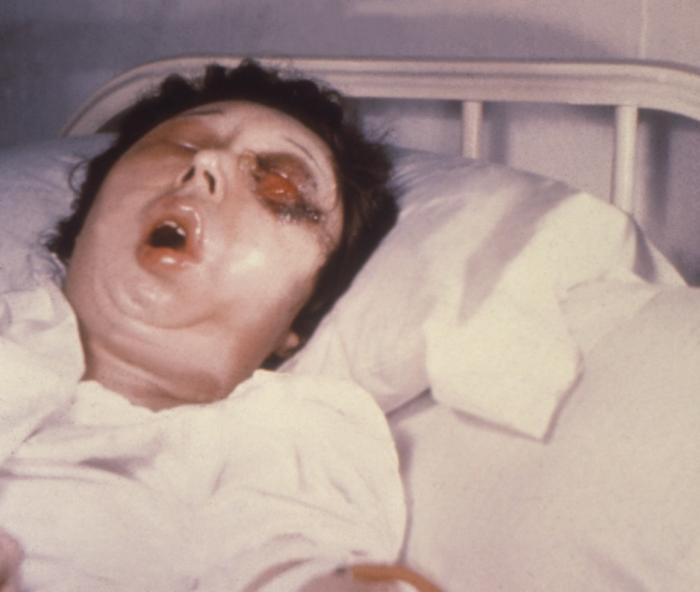Anthrax is an infectious disease caused by the bacterium Bacillus anthracis. It primarily affects animals, particularly herbivores like cattle, sheep, and goats, but can also be transmitted to humans. The disease can manifest in three forms: cutaneous (skin), inhalation (lung), and gastrointestinal (digestive system).
OSUN DEFENDER has exclusively gathered thirty things to know about the anthrax disease. See below;


1. Anthrax is an infectious disease caused by the bacterium Bacillus anthracis.
2. It primarily affects animals, especially herbivores like cattle, sheep, and goats, but can also be transmitted to humans.
3. Anthrax can be contracted through direct contact with infected animals or their products, such as meat, hides, or wool.
4. In humans, anthrax can manifest in three forms: cutaneous (skin), inhalation (lung), and gastrointestinal (digestive system).
5. Cutaneous anthrax is the most common form, characterized by skin lesions that can be painless and resemble insect bites but develop into black ulcers.
6. Inhalation anthrax is the most severe and life-threatening form, resulting from inhaling spores of the bacterium.
7. It can cause flu-like symptoms that rapidly progress to severe respiratory distress.
8. Gastrointestinal anthrax occurs through consuming contaminated meat and results in symptoms such as abdominal pain, vomiting, and diarrhea.
9. Anthrax is not known to spread from person to person. It requires direct contact with the bacteria or its spores.
10. The spores of Bacillus anthracis can survive in the environment for long periods, making anthrax a concern in certain regions.
11. Symptoms of anthrax can vary depending on the form and can include fever, fatigue, muscle aches, and difficulty breathing.
12. The diagnosis of anthrax is confirmed through laboratory testing, including culture and identification of the bacterium.
13. Early treatment with appropriate antibiotics is crucial in managing anthrax and preventing severe complications.
14. The primary antibiotic used to treat anthrax is ciprofloxacin, but other antibiotics like doxycycline or penicillin may also be effective.
15. Anthrax vaccines are available for individuals at high risk of exposure, such as military personnel or laboratory workers.
16. Standard precautions, such as wearing personal protective equipment (PPE), are crucial when handling potentially infected animals or materials.
17. Livestock vaccination programs and strict surveillance systems are implemented in many countries to control and prevent anthrax outbreaks.
18. Anthrax is considered a potential agent for bioterrorism due to its ability to be dispersed as spores and cause significant illness and death.
19. In the event of a suspected or confirmed anthrax attack, public health authorities have plans in place for rapid response, including isolation, treatment, and prophylactic antibiotics.
20. Anthrax has a long history and has been identified in ancient civilizations. It was one of the first diseases to have its cause discovered by Robert Koch in 1876.
21. Bacillus anthracis produces several toxins that contribute to the severity of anthrax infections.
22. The protective antigen (PA) toxin is a key component used in anthrax vaccines to induce immunity.
23. Anthrax infections can be fatal if left untreated, particularly in the inhalation form, which has a high mortality rate even with treatment.
24. Post-exposure prophylaxis with antibiotics may be recommended for individuals who have been exposed to anthrax but are not showing symptoms.
25. The World Health Organization (WHO) and other international organizations monitor and provide guidelines for the prevention and control of anthrax.
26. Anthrax outbreaks are more common in regions with inadequate veterinary infrastructure, poor animal health practices, or limited access to healthcare.
27. The production and handling of anthrax as a biological weapon are strictly regulated under the Biological Weapons Convention and other international agreements.
28. Surveillance and reporting systems for anthrax exist in many countries to track and respond to outbreaks promptly.
29. Anthrax spores can be destroyed by heat, chemicals, and radiation, but they are highly resistant and require specialized methods for decontamination.
30. The overall incidence of anthrax in humans is relatively low, but localized outbreaks can occur in certain areas or during specific circumstances.
Public education and awareness campaigns play a crucial role in preventing anthrax infections by promoting proper hygiene, vaccination, and reporting of suspected cases.












1 Comment
[…] Source link […]